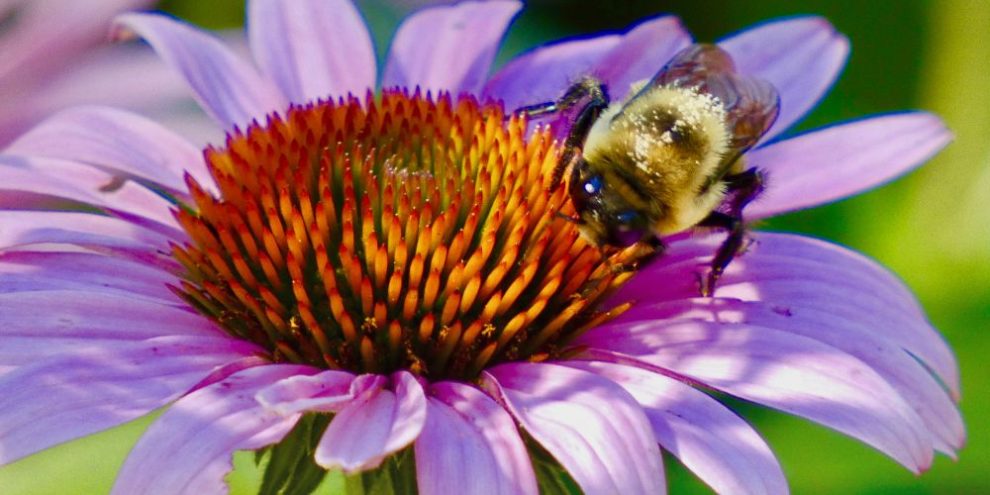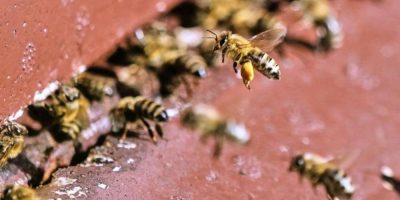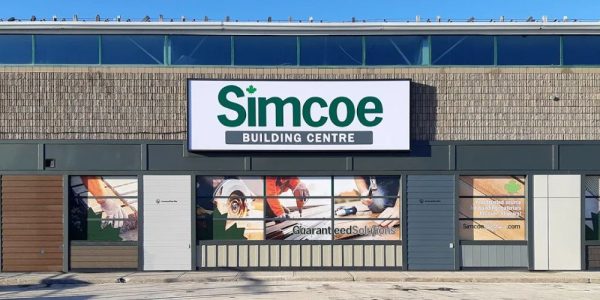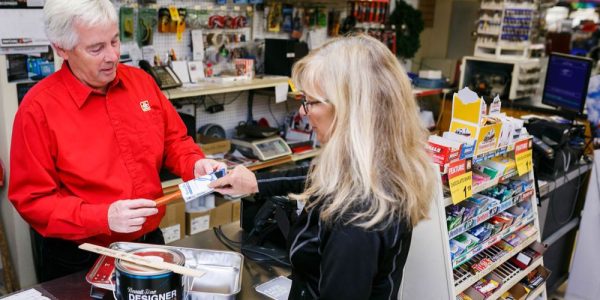
Our pollinators are in trouble! Populations of bees and other pollinators have been on the decline over the past few years due to decreasing crop diversity, weather changes, loss of habitats, and the use of certain pesticides.
The good news is that you can help just by planting a few key flowers in your garden!
Save the honey bees
When it comes to the pollinator crisis, honey bees tend to get a lot of attention.
There's no denying that honey bees are an important species. They're excellent pollinators and provide lots of high quality products including honey, royal jelly, pollen, beeswax and more.
But here's the problem ... they're not native to Canada.
Honey bees came from Europe in the 1600s and are still imported for local honey operations. While we do have colony loss here in Canada, honey bees are not at risk of extinction. In fact, in other parts of the world, honey bees are "one of the most common species." According to the FAO (Food and Agricultural Organization of the UN), managed hives have increased 80% in the last 60 years.
INTERESTING FACT: According to Canadian Geographic, more than 50% of Canadians think honey bees are native and in decline.
And sure, honey bees can be great for agriculture. But the tradeoff for increasing nonnative honey bee populations is the destabilization of our ecosystems by increasing competition for native bees and pollinators. Some of which are already endangered, including the monarch butterfly and rusty-patched bee (the last known Canadian sighting was in 2009 at Pinery Provincial Park).
So while saving the honey bees may not be a good use of your time, your efforts can certainly benefit the hundreds of wild pollinators that do need your help.
With that in mind, let's look at which flowers you should plant to attract these pollinators.
Best flowers for native bees
A lot of bees are solitary (meaning they don't live in hives) and many specialize in collecting pollen from a limited range of plants. This specialization makes them super-efficient at transferring pollen, ensuring healthy fruit and seed production. But it also means you need to be more specific about what you plant.
Here are a few of the things you could add to your garden that will not only make your garden look even better but help native bees and other pollinators, such as butterflies, hummingbirds, and more!
Black Eyed Susan
This cheerful wildflower has bright yellow petals with a dark brown center, resembling a black eye. Black-Eyed Susan is a prolific bloomer, providing a continuous feast for bees throughout summer and fall.
Coneflowers
These perennials boast large, daisy-like blooms with prominent central cones. They come in various colors, attracting a wide range of bees throughout summer and fall. Their sturdy stems hold up well against wind and rain, making them a low-maintenance choice.
Bee Balm
Bee balm's fragrant, tubular flowers offer a plentiful nectar reward, making it a favorite among native bees, including the rusty-patched bumblebee. It's also good for attracting hummingbirds and butterflies too. Bee balm comes in shades of red, pink, purple, and white, adding a pop of color to your garden.
Asters
These late-blooming perennials provide a valuable food source for bees in autumn, when many other flowers are fading. Their daisy-like flowers come in various shades of purple, pink, and white. Asters are a great choice for extending the season of blooms in your garden and providing a vital food source for late-emerging bees.
Goldenrods
These tall, yellow-flowered perennials are a mainstay for fall-emerging bees. They offer a vital source of nectar and pollen when other resources are scarce. Goldenrods are often overlooked due to a misconception that they cause allergies, but they are wind-pollinated and don't produce the pollen that triggers hay fever.
Blazing Stars
These showy perennials feature tall spikes of purple or pink flowers that attract a variety of pollinators, including butterflies and native bees. Blazing stars are low-maintenance and thrive in well-drained soil, making them a great choice for beginner gardeners.
Milkweed
This essential food source for Monarch butterflies also attracts a variety of native bees with its clusters of small, fragrant flowers. While some milkweed varieties are toxic to humans and pets, there are plenty of non-toxic options available.
Columbine
These delicate perennials come in a range of colors and feature unique blooms that are perfect for attracting long-tongued bees like bumblebees. Columbine thrives in cooler, shadier areas of the garden.
Sedum
These succulent perennials come in a variety of shapes, sizes, and flower colors. Sedum attracts a wide range of pollinators, including native bees, with its star-shaped flowers that bloom in late summer and fall. Sedum is drought-tolerant and low-maintenance.
Native Bushes
Don't forget about the woody plants! Many native shrubs provide valuable pollen and nectar sources for bees. Consider adding serviceberry, blueberries, or flowering currant to your garden.
Other ways to help pollinators
- Do your research before installing a bee hotel. While creating nesting spots for bees can be helpful, they need to be properly built and managed. Otherwise they can become home to parasites.
- Stop using pesticides. If you need to, try to find an organic product and spray early or late in the day to avoid spraying pollinators.
- Avoid planting invasive species.
- If raising bees, use special holes that allow workers to go in and out but keep queens safely inside so they don't establish nests elsewhere.
- Contribute to citizen science projects like bumblebeewatch.org and iNaturalist. These apps and site help scientists track and locate species.
- Learn more about native pollinators and share what you have learned.
- If you can't plant a garden, use planters or help out a local park stewardship group remove invasive species and plant native ones.
- Advocate to protect green spaces and policy to conserve native pollinators.
Help our native pollinators thrive
While the plight of honey bees grabs headlines, the real heroes of pollination are hundreds of native species facing a silent decline. The good news is, you can create a haven for these vital pollinators right in your own backyard!
Planting a pollinator garden with a variety of native flowers is a simple yet impactful way to make a difference. These blooms provide a critical food source for bees, butterflies, hummingbirds, and other pollinators.
So why wait? Plant a pollinator garden today and watch your backyard come alive!
RELATED: No mow May? Good intentions, bad approach, critics say ...











